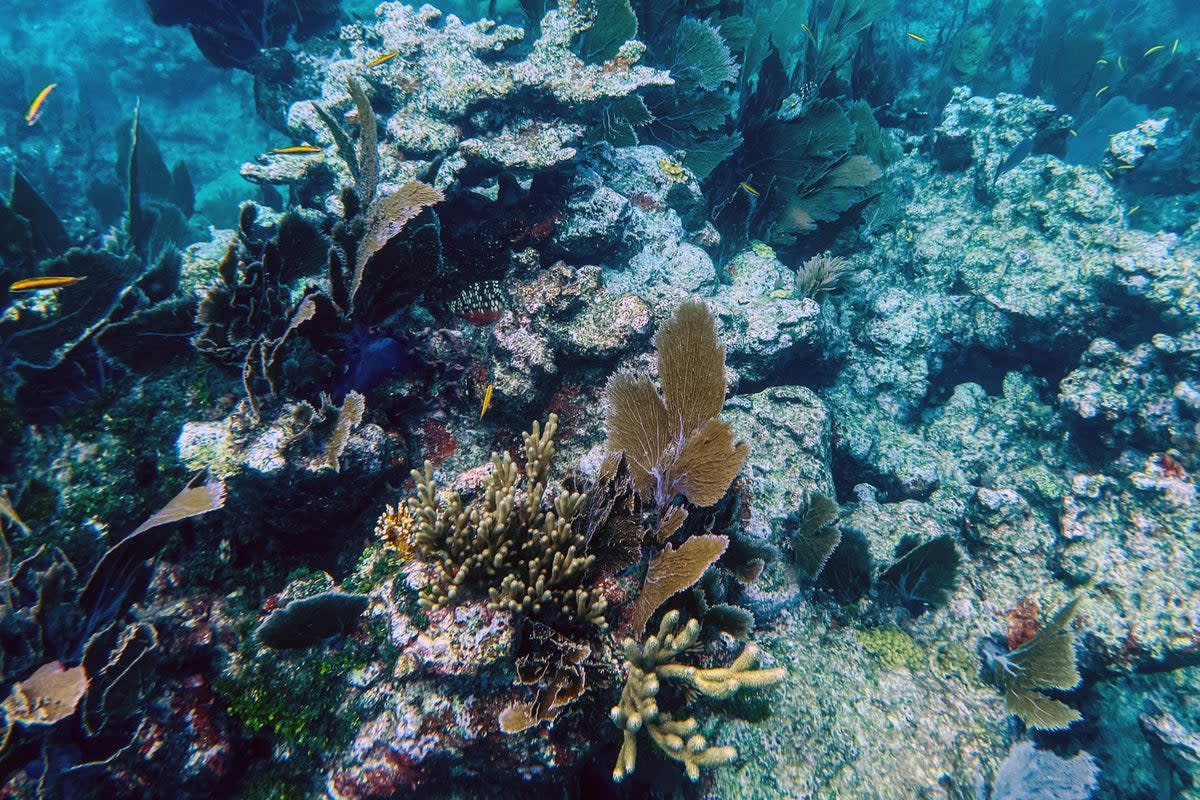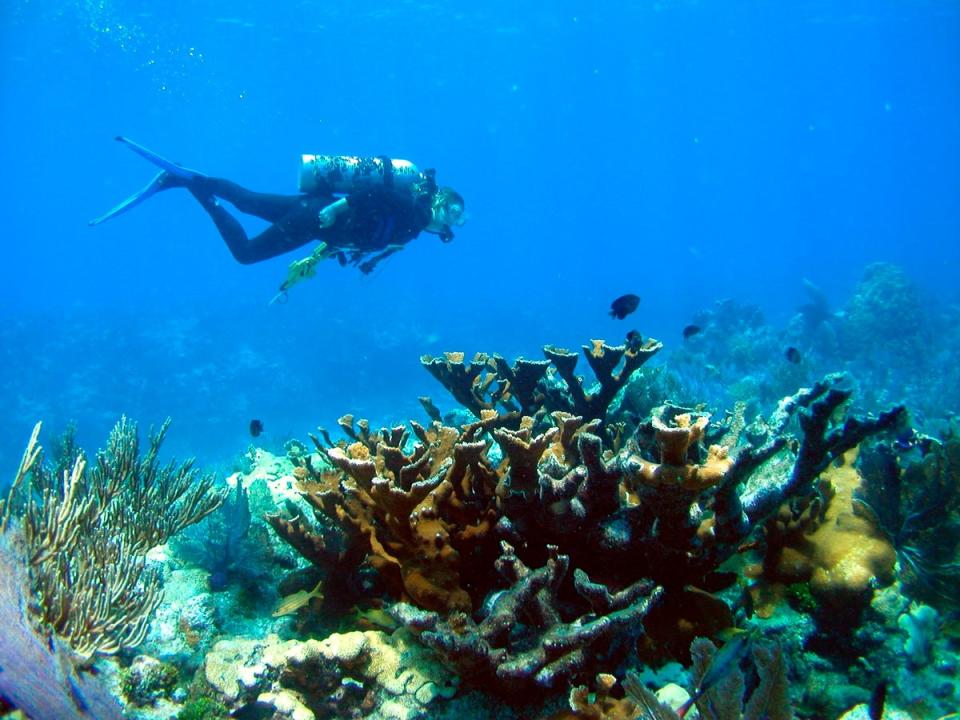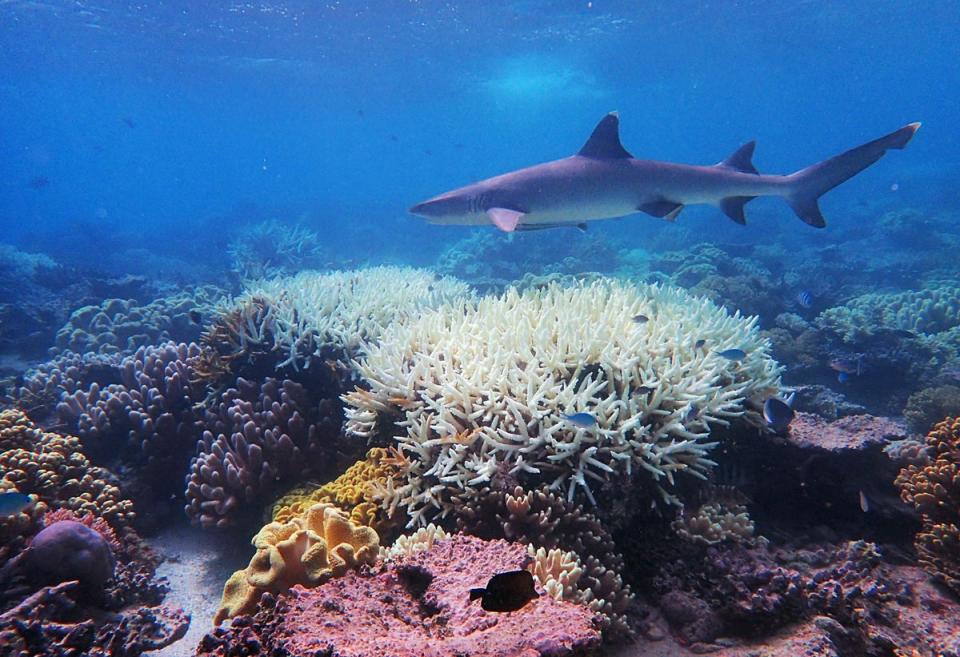Florida coral reefs risk ‘nasty bleaching’ as temperatures reach 90F: ‘We’re in unchartered territories’

Florida coral reefs are facing an unprecedented threat from a sudden marine heat wave that has pushed water temperatures to 90 Fahrenheit.
Sea surface temperatures around the coast have reached the highest levels on record since satellites began collecting ocean data, threatening these delicate reefs.
The rising temperature, close to 97F in some areas, isn't the only concern for July as scientists worry it could progressively get worse in the upcoming months of August and September.
The stress accumulating very early in the season could lead to "nasty bleaching", said International Coral Reef Society’s Mark Eakin. "Bleaching” is a recurring phenomenon and happens when corals are stressed by increases in ocean warming or lack of nutrients.
Coral bleaching and die-offs have become more frequent due to the climate crisis, especially during El Nino. Scientists say a new El Nino is part of the reason for the current heat, along with ever-increasing warming from the burning of coal, oil and natural gas.
“We’re entering uncharted territories,” Derek Manzello, an ecologist and the coordinator of the National Oceanic and Atmospheric Administration (NOAA) Coral Reef Watch program, told New York Times. “To be blunt, it can be very depressing,” Dr Manzello said.
Liv Williamson of University of Miami’s Coral Reef Futures Lab said there are already reports of bleaching from Belize, which is very alarming "this early in the summer".
She added that the global projections give a 90 per cent chance for major bleaching on many reefs, including in Pacific Islands along the Equator, the eastern tropical Pacific in Panama, the Caribbean coast of Central America, and in Florida.

“This is only July, this heat will just keep accumulating and these corals will be forced to deal with dangerously warm conditions for much longer than is normal,” Ms Williamson told the Associated Press.
Corals have a "symbiosis”, mutually beneficial interactions, with minute algae called zooxanthellae that live in their cells. The algae get nutrients and carbon dioxide from the relationship while corals are supplied with energy from the products of photosynthesis.

A change in temperature, even by 1C or 2-3F, means the fragile symbiosis falls apart. Without the algae, the coral turns from healthy brownish colour to white in a process known as “coral bleaching".
While coral that bleaches won't always die, chances of death becoming inevitable rise with the intense temperatures. The sea surface temperatures around Florida have been more than 2C above normal range for nearly two weeks, according to Dr Manzello.
A study published by NOAA in 2022 found that climate change-fueled coral disease and bleaching have already eroded 70 per cent of Florida’s coral reef.
However, the rising temperature is also putting a dent in Florida's economy as the coral reefs generate billions of dollars through activities like fishing and tourism.
Katey Lesneski, monitoring coordinator for Mission: Iconic Reefs, a NOAA project that aims to restore seven reefs around the Florida Keys, saw the bleaching firsthand this past weekend.
She said she saw the beginning stages of bleaching in coral up to 60 feet deep at an unnamed reef off the coast of Islamorada.
“The corals look a lot lighter in color, they’re usually pretty robust tones of yellows and greens and browns and oranges, but they literally start to look like someone threw bleach on them,” Ms Lesneski told CNN.

